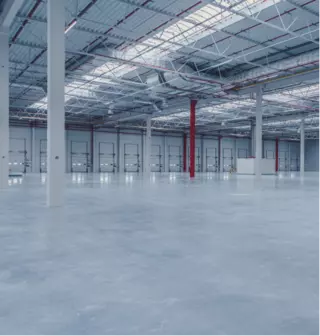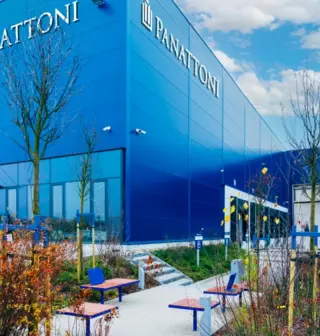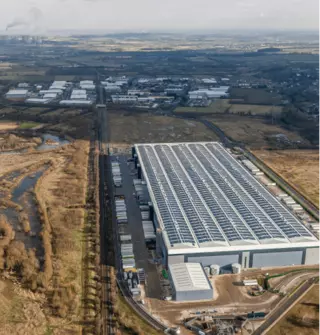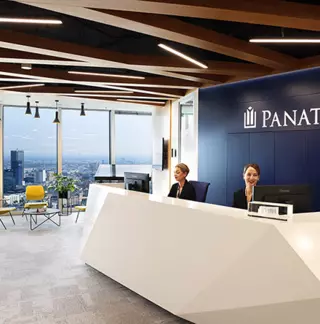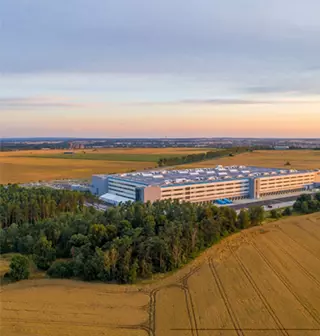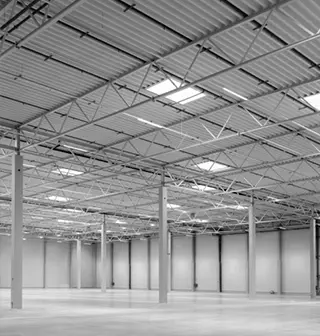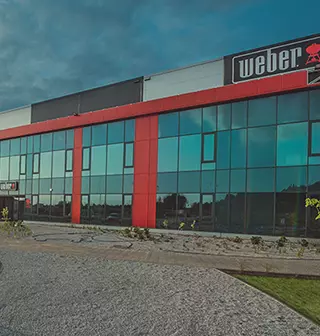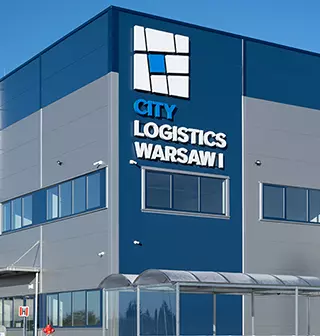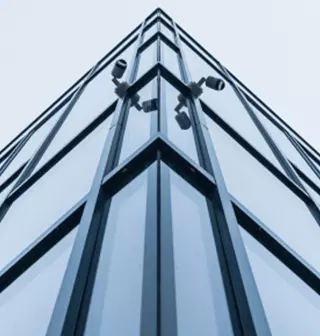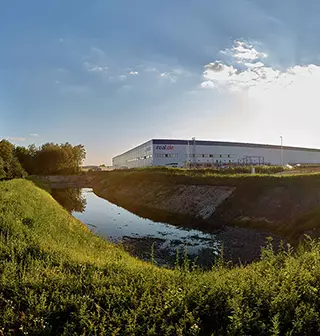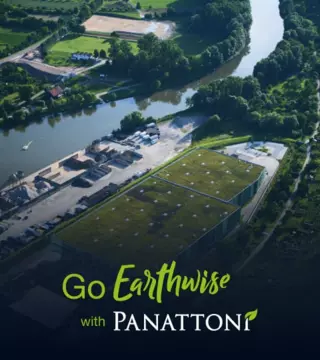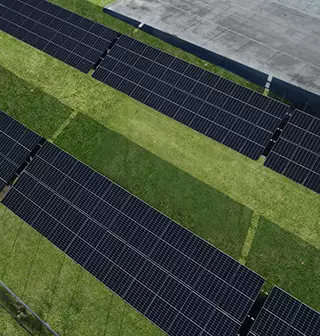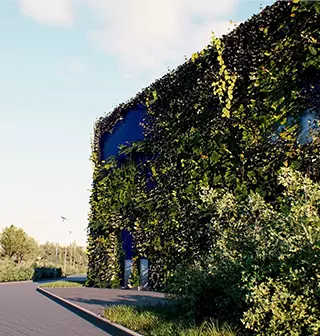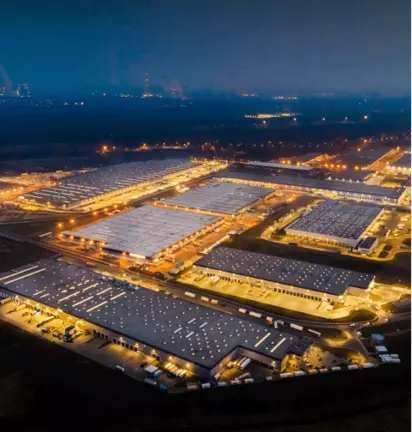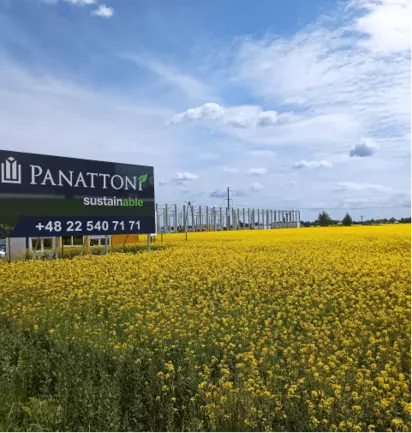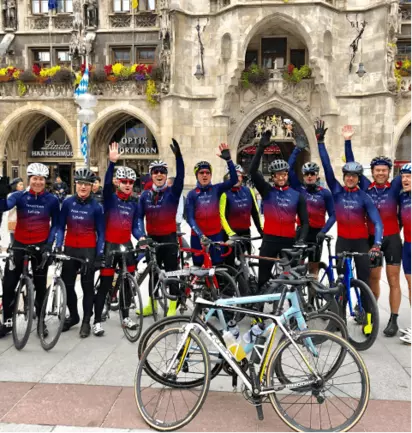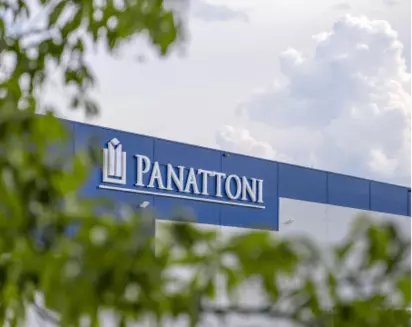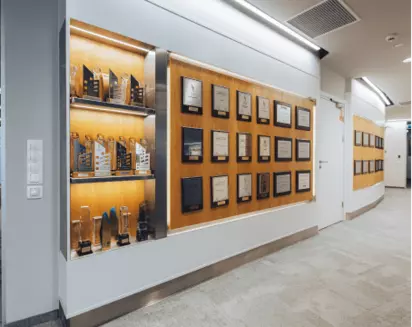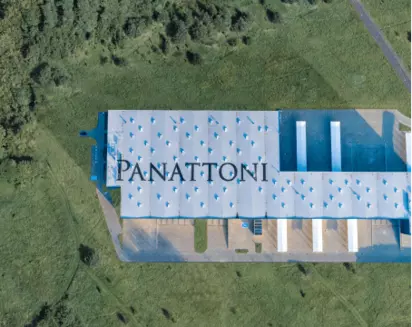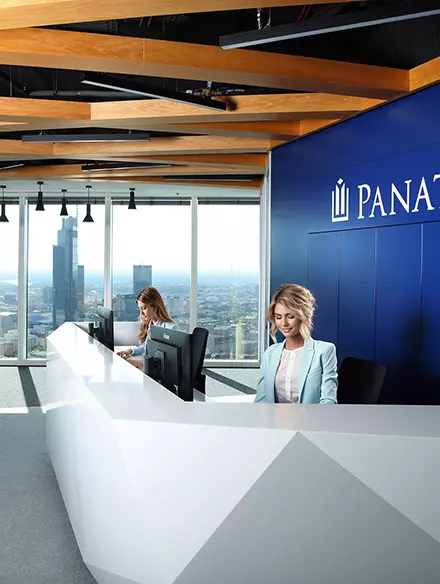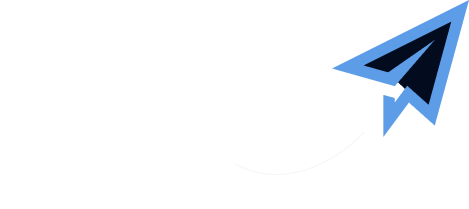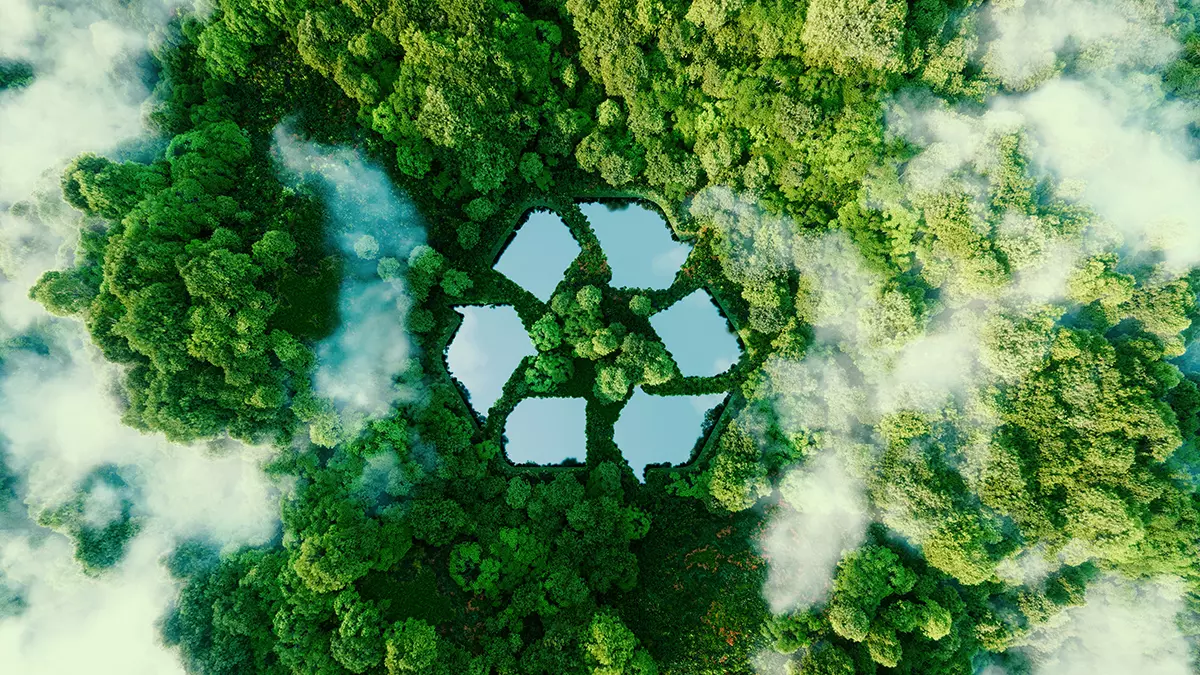
Poland takes last place among all the member countries of the EU for the size of its potable water resources, which is why using them in a rational manner is of particular importance. It is also important for achieving the climate goals of the UN and the European Union. For this reason, Panattoni implements a number of water saving solutions in the design and construction of its industrial buildings (including modern monitoring and leak detection systems, water saving sanitary fittings, rainwater and grey water systems and finally SuDS (Sustainable Drainage Systems). These can include bio-retention tanks, rain gardens and green roofs. Additionally, the developer creates green areas with local plants and also flower meadows that do not require frequent watering).
The solutions described below help limit water consumption to 6,000 litres per day for a standard building of 20,000 sqm. In many certified centres, water savings are even greater at more than 65% when compared to the standard base model.
BREEAM certification and water savings
Panattoni’s developments are currently certified under BREEAM International New Construction for a rating of Excellent. As a result, ecological solutions are carefully selected not only to be environmentally friendly but also to guarantee lower running costs for the centre with higher energy efficiency, lower carbon dioxide and exhaust emissions and also significantly reduced water usage. Water is one of the basic certification assessment categories and it is also the category, in which Panattoni very often scores the maximum number of points for its developments regardless of the eventual overall assessment. This was the case with such developments as Panattoni Park Szczecin III, which was the first in Poland to be awarded Outstanding, as well as for Panattoni Wrocław Campus 39 (Excellent), Panattoni Park Gorzów Wielkopolski Building A2 (Very Good) and Panattoni City Logistics Warsaw Airport II (Good).
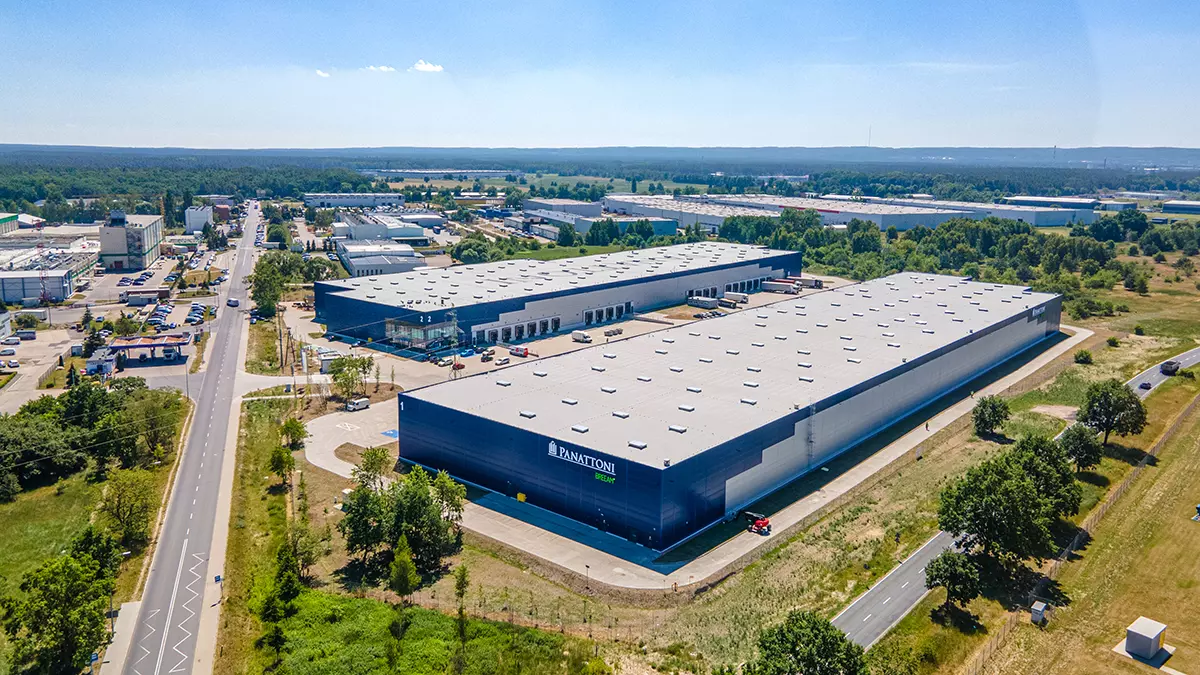
It is worth pointing out that care for water quality is also of particular importance in Panattoni’s developments, Water installations for buildings are designed to minimise the risk of microbiological contamination such as Legionella and meet the safety and hygiene best practice standards listed by ASW.
Limiting water usage during construction
Limiting water usage begins as early as the construction stage such as in the case of the development of the 113,500 sqm Hall B within the Panattoni Wrocław CAMPUS 39 (100% score for the water category). A person was appointed with responsibility for monitoring, registering and reporting not just energy consumption and all data concerning the transport of construction materials and waste but also water usage. This covered the general contractor as well as his subcontractors with the potable water usage monitored that resulted from using the building’s installations, equipment (both mobile and fixed) and from the accommodation on the building site. The intensity of water use in these processes was 0.008744999 m3/design value. A total of 992.4 m3 of water was used during the construction.
Ways of lowering water usage in Panattoni buildings
Lowering the usage of potable water to the sanitary targets set for new buildings is achieved by using water saving fixtures and monitoring systems. Water leakage detection systems also help reduce usage as does the recycling of water and the creation of green areas with local plants and flower meadows that do not require frequent watering.
Water saving fixtures
Above all what is taken into consideration are the fittings that use water such as toilets, urinals, taps, basins and showers. Taps have to fulfil stringently defined criteria. In order to further limit water losses and leaks from sanitary fittings flow control systems are installed including electromagnetic valves and motion sensors to regulate the flow of water to every area and toilet. Urinals and toilets with limited water flow, aerators in showers and basins and electromagnetic valves to cut off water flow to areas where there are no people were used in the 60,800 sqm BTS Action building in Bieruń (Excellent). The building received the maximum number of points for Water (100%). Solutions such as these result in water usage being cut by 60.78% in comparison to the average model usage.
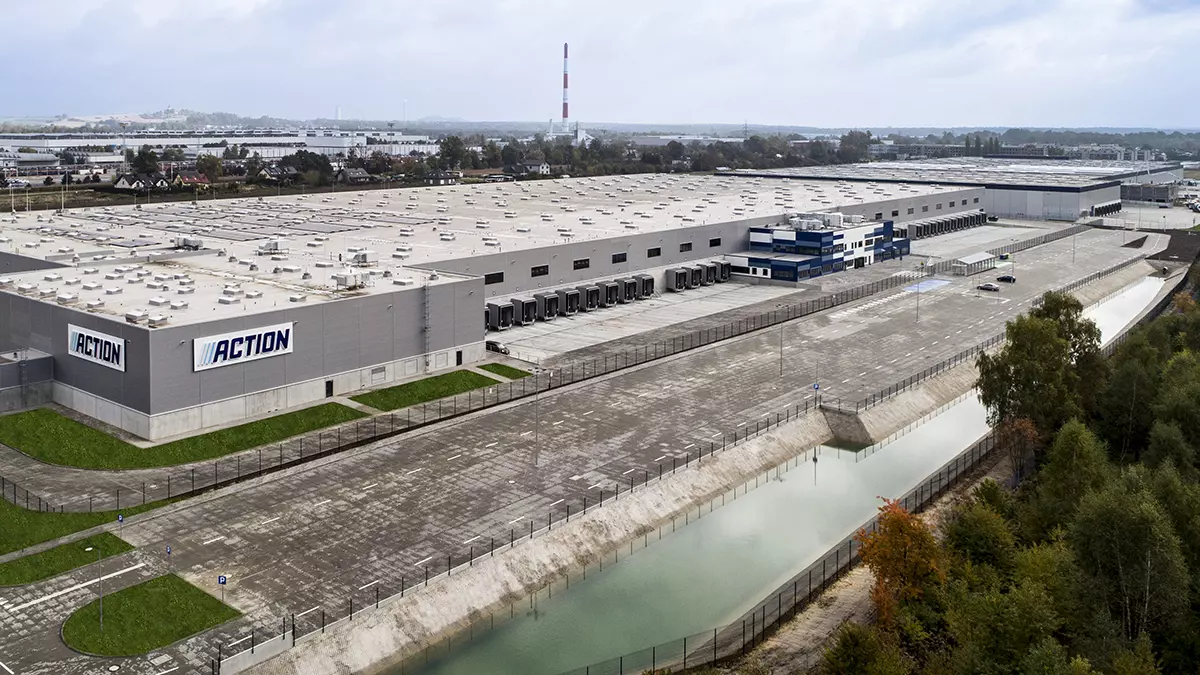
Monitoring water usage
Ensuring water usage is monitored and can be managed also encourages people to limit its consumption. This requires installing water meters that can be connected to a BMS for both the main water supply to the building and for those areas where usage accounts for over 10% of the building’s total consumption.
In Panattoni Park Sosnowiec, which was the first industrial centre in Poland to be awarded a certification rating of Excellent (with a 100% score for water), a fully automated intelligent system for monitoring the water usage of all building users was installed. Together with other solutions, this allowed water consumption to be reduced by as much as 66.5%.
Water leakage detection system
Panattoni Park Sosnowiec is also equipped with a system for detecting large water leaks in the building and in the mains supply on the site. This is primarily to reduce water leakage that can occur in the building's supply as well as between the building and its water meter. A well-designed system should activate and alert users when, for example, a meter exceeds a pre-programmed limit within a certain period of time. It should also make it possible to detect differences in flow and be programmable to meet the criteria of the owner/user while avoiding false alarms for large water use resulting from, for example, the operation of an installation.
Valves to cut off flow to toilets
Additionally, devices that cut off the water supply to the toilets when they are not in use are standard in Panattoni's developments. These include electro-valves with presence sensors to regulate the flow of water to individual toilet zones. These were used in Panattoni Park Nadarzyn, a 53,000 sqm warehouse centre in Urzut near Nadarzyn. Together with other solutions, they resulted in water savings of as much as 66.66% in comparison to the base model.
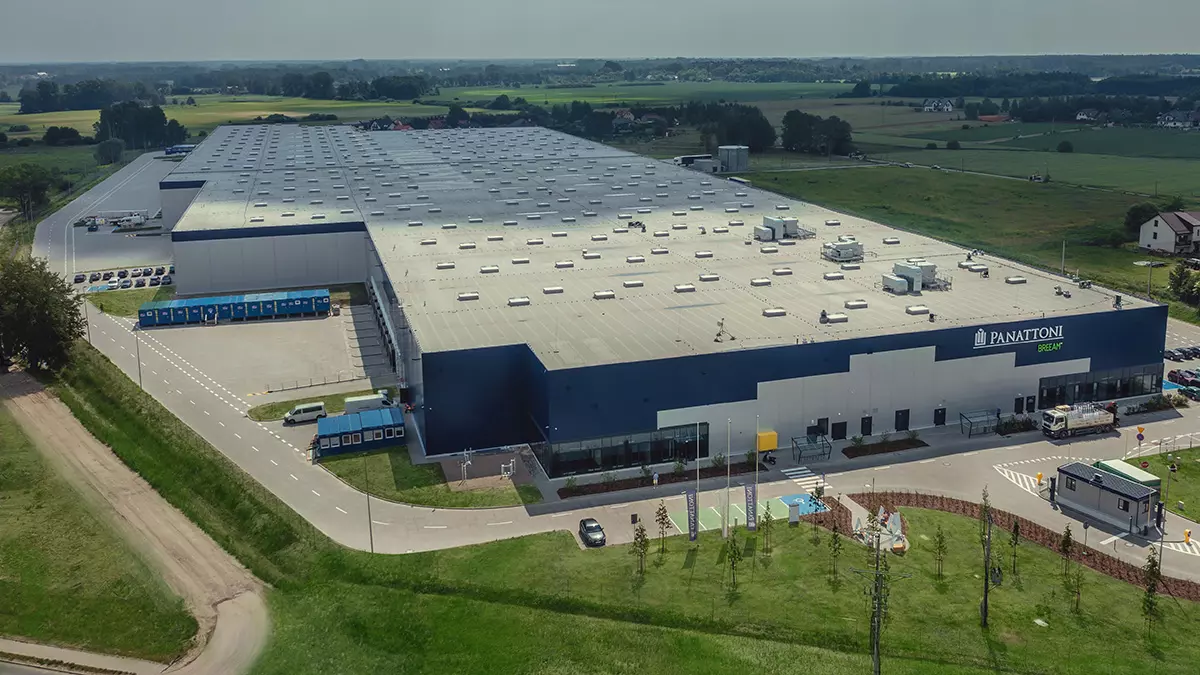
Sustainable Drainage Systems.
The increase in extreme weather conditions, as well as intense rainfall over a short period of time, can result in drainage systems to be compromised, especially in urban areas. In order to achieve more sustainable surface water management, Panattoni uses alternative ways to manage rainwater, which include sustainable drainage systems such as
Rainwater recovery. The use of rainwater storage tanks contributes to more efficient management of water for both drinking and utility usage. Additionally, such a solution makes it possible to reduce run-off and ease the burden on the sewerage system. Retention basins are fitted with drainage boxes. The estimated savings of this solution are around 30-50% less clean water usage for purposes other than technological. The return on investment for such a system is around 7-10 years.
Recycling grey water. Using tanks to store grey water (such as in sanitary facilities) reduces unnecessary potable water usage. Bio-membrane filters guarantee the complete separation of biomass from treated grey water. The water is odourless, clear and completely safe to use. The return on investment for such a system is around 4-8 years.
Green roofs. This is a solution that helps to manage rainwater in urban areas in keeping with the principle of sustainable development. Green roofs can retain rainwater and reduce rainwater run-off. We applied such a solution for the BTS Carrefour development we completed in Psary and for the BTS Lila Benningen development in Germany.
Other SuDS solutions that Panattoni uses include bio-retention tanks, rain gardens, seepage basins and underground storage reservoirs.

Nature-based Solutions for making our development sites green.
Water-saving measures are also applied to the areas and ecosystems around Panattoni's developments. These include flower meadows, parks and green relaxation zones for workers. The plants are closely linked to the region and new plantings are limited to local species that do not require watering. We also consider species that thrive without irrigation and will continue to thrive under the likely conditions resulting from climate change, which would typically be warmer and drier. These measures are confirmed by an ecologist's report. For each Panattoni development, he prepares a five-year landscape and habitat plan for implementation by the site manager. For more on Nature-based Solutions in Panattoni's operations, please read our case study.

Climate goals and saving water.
Panattoni's water-saving measures are the result of our comprehensive 'Go Earthwise with Panattoni' policy. It fits in with the EU's efforts to protect the environment and combat climate change in such a way that Europe will be a climate-neutral continent by 2050. The sustainable use of water resources also furthers various United Nations goals (SDGs), including Goal 6 - Clean Water and Sanitation, Goal 12 - Responsible Consumption and Production and Goal 13 - Climate Action.
More and more companies are setting climate neutrality targets, which include reducing water consumption. This is demonstrated by the 2022 Panattoni study on sustainability in the European logistics and supply chain area, published in partnership with international law firm HFW and Analytiqa. As many as 80% of those surveyed across twelve European countries consider measures to reduce the carbon footprint of their operations over the next five years to be crucial. For 92% of the survey respondents, energy efficiency measures in buildings are the most important, measures to reduce drinking water consumption and to make greater use of grey water and rainwater come second, as cited by 59% of respondents.
